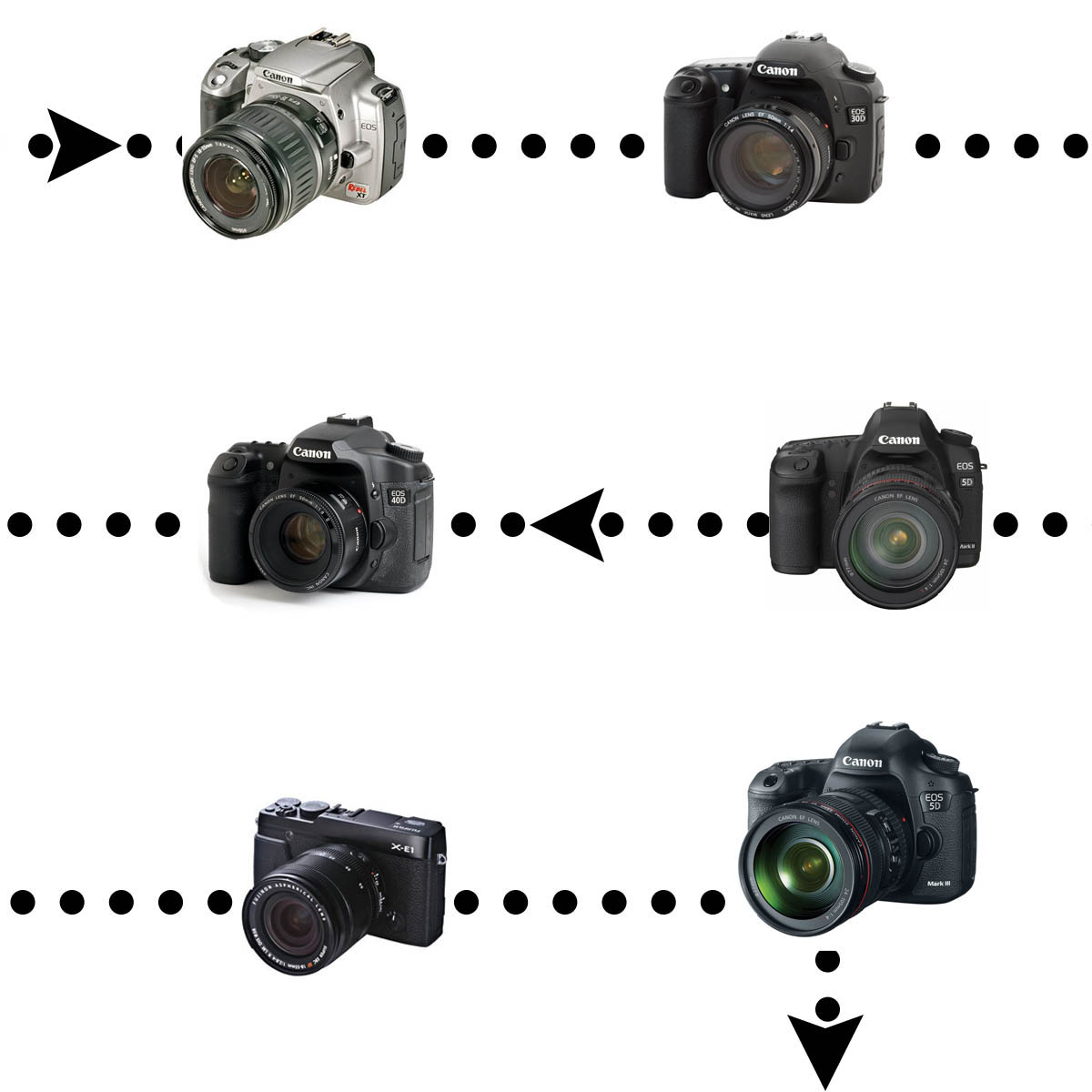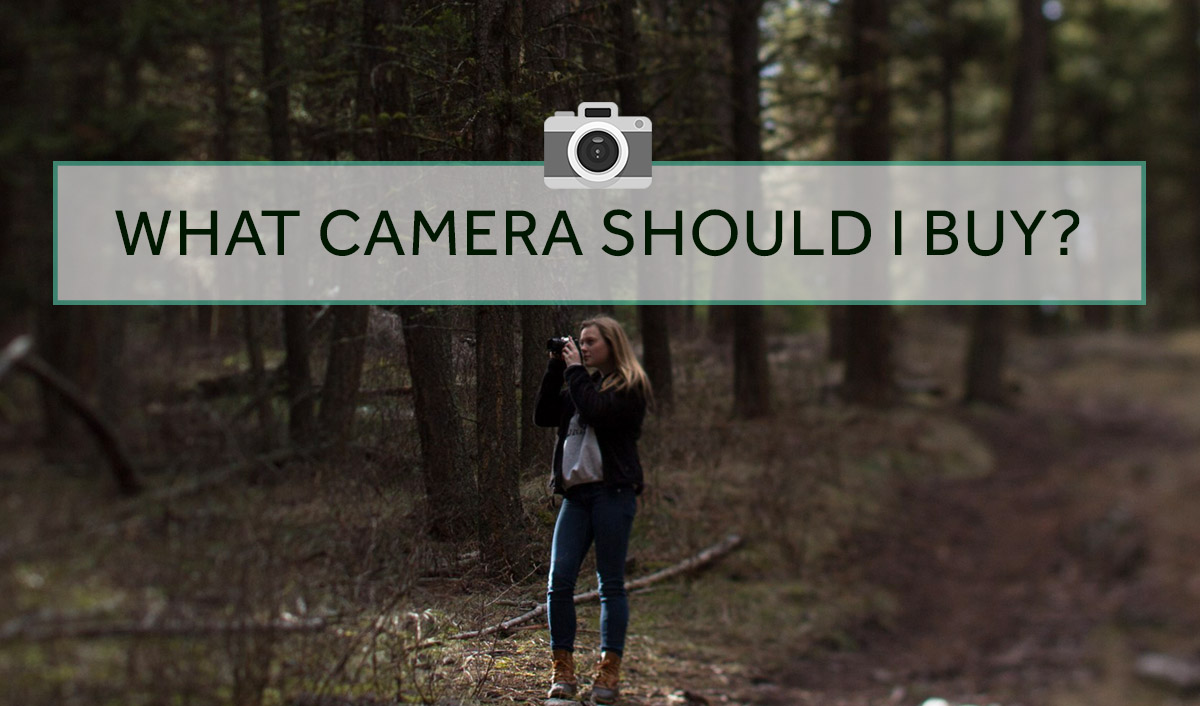Which Camera Should I Buy (for beginners)?
By far, the most asked question I have gotten over the last 11 years as a professional photographer is “What camera should I buy?”. I really enjoy answering this question and helping people find the right camera, so it makes sense to consolidate most of the research and experience here to help more people with this difficult decision. Obviously, there is a lot to consider and my recommendations are based on your needs, so for the sake of simplicity I will break this down into 3 categories: Starter, Mid-level and Working Professional. These are also ascending by price and budget. I will recommend camera bodies ranging from $400 up to around $2,500.
What Not to Buy
I’ll be recommending lenses in a later post, but for now, I want you to know that lenses are just as important to me as the camera body. Most of my camera recommendations are for the “body only”. Don’t buy the kit with 8 filters, 3 zooms and a cheap memory car, plastic tri-pod and 50 accessories. Kit lenses are far inferior to even the entry level prime lenses. The 18-55 mm that comes standard with most starter DSLR’s will not be useful to you for very long.
A Big Consideration
When I recommend cameras, I realize that the decision is going to result in a long-term relationship. Here’s a diagram of my most recent camera body purchases.
 You will notice that most of them are of the same brand – Canon.
You will notice that most of them are of the same brand – Canon.
Canon vs Nikon vs Sony vs Fuji vs….
I’m going to recommend brands that I use, so most of my recommendations are for Canon. Does this mean that I think Canon is always better than everybody else? No. What it means is that once you start investing in lenses, it’s difficult to switch brands. So it is a long-term commitment. Sure, you can sell your gear and start over. Lenses do tend to have great resale value. I have friends who have started over, but it can be a pain. Your first camera purchase may be your most important for that reason.
I still choose Canon because of it’s full-frame, good skin tones and huge suite of lens offerings. Perhaps more importantly, my friends had Canon when I started. Why does that matter? It’s great to be able to share lenses, especially in the early stages when you don’t have any. If I had a best friend or a brother with a Nikon D750 and 8 lenses and I was just starting, I very well may go the Nikon route for that reason. We’re not super dogmatic about the brand.
Starters ($400 – $750)
Canon T5i (around $650 body)
I’ve owned several of the rebel series both for personal use in my early days. They are a great starter camera because you will have full manual controls and be able to use a wide variety of canon lenses- the same lenses you may eventually use on a Canon 1DX. So when you start here, your lens investments will never be useless. It’s not the newest rebel, but it has some great features like Movie Servo AF for continuous focus tracking of moving subjects while shooting video and an integrated speedlite transmitter. At this level, 18 megapixels should be plenty. If you are planning on going professional, this camera will eventually serve as a reliable backup camera for both video and photo. It’s worth noting that, as with all entry cameras, this is a cropped sensor so your lenses will have a magnified effect of 1.6x. Pair it with a 50mm to start.
Fuji XE-1 (around $550 body)
Supposedly this camera has earned the nickname “Sexy One” in Japan, for it’s outward beauty and overall appeal. This camera is a great starter camera. It’s aesthetically pleasing in many ways. It has a vintage rangefinder feel to it that distinguises it from the other options. The shutter and aperture controls are perfect for going manual. It also produces some of the best straight-from-camera quality jpeg images that I have seen. It’s noticeably smaller than DSLR’s. This is a mirrorless camera and for that reason there are a few downsides. The focusing is not as fast as the rebel. The viewfinder is an electronic hybrid. I really prefer an optical viewfinder, but if you are not accustomed to that, you might not mind. Start with the 35mm lens or the 27mm.
Note: For a few hundred dollars more you can get the XE-2 (newer version of the XE-1). The main benefits are better, faster autofocus and a fast image processor.
Nikon D7000 (around $479 body)
If you are choosing Nikon, this is a great starter body that is currently a very good value. It is comparable to the Canon Rebel.
Canon SL1 (around $400 body)
This is my low budget pick. It’s a step down from the T5i, but if you combine this with 50mm 1.8 lens you have a solid starter setup for about $500. One thing to consider – this is significantly smaller than the T5i, so if you have big hands, it might not be the best. On the flipside, you could probably carry it in a purse. And bringing your camera everywhere is a good choice, especially when your trying to learn your camera.
It’s worth noting that the Iphone 6 takes great pictures compared to any previous smartphones. It exceeds the galaxy all previous version in image quality. The outdoor photos it can take are impressive, and it’s gotten much better in low light. It still blows highlights more than the DSLR and mirrorless offerings, but with the ProCam app you can still learn photography by controlling your Aperture, Shutter and ISO. If a DSLR is purchase is not in the immediate future, ProCam app will give you a head-start in learning photography.
In closing, I want to make it clear that a good camera doesn’t make a good photographer. It’s important that you invest in education and learning to control your camera manually. I’ve made a free starter course.CLICK HERE
Lastly, if you are making a purchase, you can find detailed reviews for the cameras we mention in our amazon associate store.
CLICK HERE if you would like to be notified of our best mid-level and professional options in upcoming posts.

